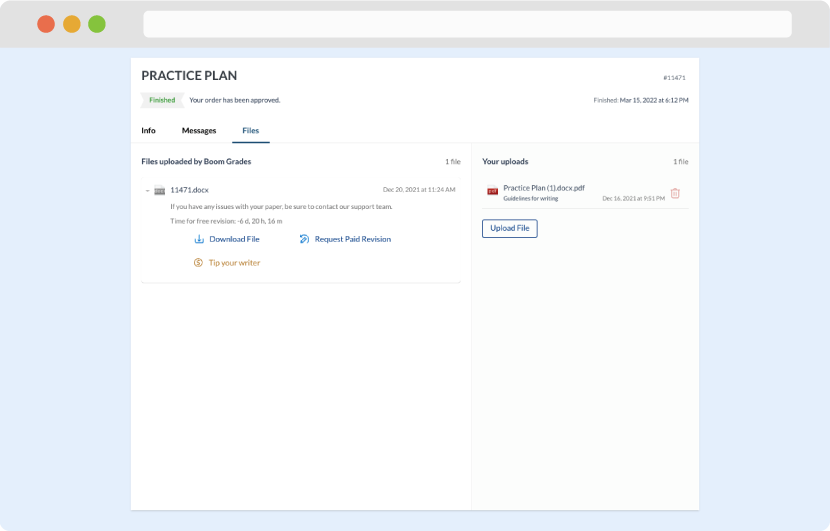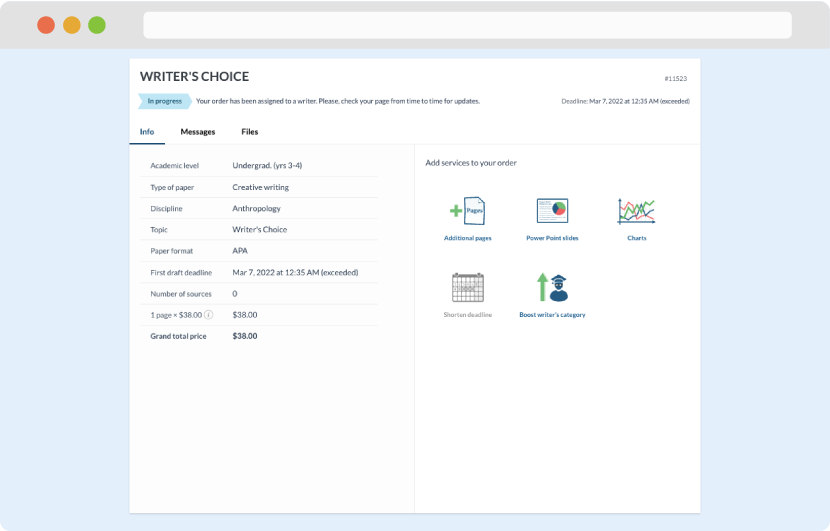Don't use plagiarized sources. Get Your Custom Essay on
CNUR 301 Academic Paper: Conflict Resolution Purpose: The student will demonstrate an understanding of conflict management and the nurse leader’s role in having a positive impact on conflict situations. Through examination of nursing leadership concepts and critical analysis of a case scenario, the student will identify effective conflict resolution strategies. Course Outcomes: • apply conflict resolution principles to relational practice • understand selected leadership theories (styles) • apply leadership principles to interprofessional collaborative practice and teamwork Grading: 30% (of final mark) Due Date: June 1, 2020 @ 1200 hrs. noon Guidelines: • Select one (1) case scenario to analyze [case scenarios outlined below] • To help guide you, refer to the required readings from Unit 3 & 4. • Analyze the scenario and reflect on the following to guide your writing: o Identify the type of conflict that is occurring in the scenario. o Identify and describe the conflict behaviors from the scenario. o What might be the short term and long term impacts of the conflict? o What are potential outcomes/consequences if the conflict is not managed? o What conflict resolution strategies would the nurse leader use in the described scenario? o Examine one leadership style and explain how it applies to managing the conflict in the described scenario. o How would the CNA, Code of Ethics (2017) apply to the scenario? o How would the National Interprofessional Competency Framework apply to the scenario? Requirements: • Analyze the conflict presented in the scenario: o Describe the type of conflict and conflict behaviours o Explain one (1) possible impact of the conflict and potential outcomes/consequences if the conflict is not managed. • Demonstrate application of the following as it relates to the scenario: o Two (2) conflict resolution strategies o One (1) leadership style o CNA Code of Ethics o National Interprofessional Competency Framework • 5-6 pages in length, not including cover or reference page; no abstract or table of contents required • Include a minimum of 6 current (within 5 years) and relevant scholarly resources • Utilize professional nursing concepts and language • Demonstrates original thought and critical analysis of conflict resolution as it relates to this scenario • All technical writing and formatting are consistent with APA 6th edition Submission Instructions: o Save your paper as: 301 Academic Paper STUDENT SURNAME (Upper Case), First name (Lower Case); (i.e.). 301 Academic Paper, DEPP, Johnny o Upload under the Assignment Submission Tab on CNUR 301 UR course page Academic Writing Assistance: o The University of Regina Student Success Center: https://www.uregina.ca/student/ssc/ o Saskatchewan Polytechnic Learning Services: https://saskpolytech.ca/studentservices/academic/online-writing-support.aspx *** Scenarios on next page *** Scenarios (Choose One of the Following): 1. A nurse working at the Allan Blair Cancer Clinic overhears her patient and his family discussing the seriousness of his cancer diagnosis and his advance care directive. The family members were sharing their personal beliefs, discussing care options and disagreeing with their father’s wishes. The nurse quietly listened while she set up a new IV line for her patient. Finally, the nurse could no longer listen to the family and began to forcefully share her opinions and explained why she had her opinions. The nurse had lost her own father three years earlier to suicide and she held some very strong values and opinions about living and dying. The family was very shocked and offended that the nurse interceded in their conversation. One family member told the nurse that she had no right to tell the patient what to do. The nurse argued that she had a responsibility to advocate for her. The nurse was angry with the family and left the room in frustration. At the end of her shift, the nurse posted comments on Facebook regarding the work conflict, emphasizing her opinion further. The family made a formal complaint to the clinical manager about the nurse’s behavior. 2. Kathy is a nurse working in a busy emergency department (ER) in a large hospital. She is caring for a seriously injured patient who had been in a motor vehicle accident. The patient was deteriorating quickly, and Kathy called for help. Another nurse Denise comes to help. When Denise arrives she informs Kathy that she did not prioritize the care needs properly and stepped in to take over setting up the ECG monitor. Denise told Kathy to get an IV line in the patient and when Kathy went to leave the room, Denise told her that she was disorganized and criticised her for not having the necessary IV supplies in the patient’s room. The attending physician entered the room and Denise started to complain about Kathy. The physician firmly told Denise that they would continue the conversation later and began to assess the patient. The physician had difficulty responding to the patient’s questions because Denise continued to tell the physician that he should not trust Kathy’s nursing assessment. 3. George, a RN works very hard on the orthopedic unit and feels that two other RNs are not caring for their patients nor completing their nursing responsibilities. George is angry because these two nurses took an extended lunch break and they visited in the medication room for 10 minutes after coffee break. George decided to talk about the two nurses with his LPN colleague and the unit clerk, which caused tension and conflict among the staff working on the orthopedic unit. During the shift, at the unit desk, a patient was waiting to ask a question about her wrist and arm swelling when she witnessed George, another nurse and the unit clerk yelling at each other, so the patient decided not to interrupt and went back to her room. 4. Rebecca started her nursing career working on a medical unit in the local city hospital. After approximately six months of work, Rebecca began to question her decision to become a nurse and was considering leaving the profession. Rebecca left work feeling deflated and in tears at least once per week, and she began to ponder whether she liked nursing and if she could competently care for patients. Rebecca felt belittled by her mentor and unsupported by the other nurses, who all seemed too busy to help her. She frequently observed her mentor roll her eyes and sigh loudly when Rebecca asked a question. She also overheard her mentor arguing with the physiotherapist earlier in the shift regarding care for their shared patient. After lunch, the physiotherapist approached Rebecca asking about her mentor, and commenting, “I don’t know how you put up with her!”. Rebecca felt cornered and was unsure how to reply. Unit 3+4 Readings Almost, J., Wolff, A.C., Stewart-Pyne, A., McCormick, L.G., Strachan, D., & D’Souza, C. (2016). Managing and mitigating conflict in healthcare teams: An integrative review. Journal of Advanced Nursing, 72(7), 1490-1505. Retrieved from http://search.ebscohost.com.libproxy.uregina.ca/login.aspx?direct=true&db=rzh&AN=115831081&site=ehost-live What did the findings suggested as characteristics which were antecedents to conflict and choice of conflict management style? College of Nurses of Ontario. (2018). Conflict prevention and management: Practice guideline. Retrieved from https://www.cno.org/globalassets/docs/prac/47004_conflict_prev.pdf Muller, S., & Willcox, A. (2018). Identifying and understanding how to manage conflict. In J. Wagner (Ed.), Leadership and influencing change in nursing (Chapter 11). Retrieved from https://leadershipandinfluencingchangeinnursing.pressbooks.com/chapter/chapter-11-identifying-and-understanding-how-to-manage-conflict/ Canadian Nurses Association. (2011). Interprofessional collaboration: Position statement. Retrieved from https://www.cna-aiic.ca/~/media/cna/page-content/pdf-en/interproffessional-collaboration_position-statement.pdf?la=en (3 pages + references) Toye, C., & Wagner, J. (2018). Primary health care: Interprofessional leadership, collaboration, and teamwork. In J. Wagner, (Ed.), Leadership and influencing change in nursing (chapter 6). Retrieved from https://leadershipandinfluencingchangeinnursing.pressbooks.com/chapter/chapter-6-primary-health-care-interprofessional-leadership-collaboration-and-teamwork/ NOTE: read 6.1 (p106-111), 6.2 (p112-120)and 6.3 (p121-123) and Omit coloured text boxes (9 pages)
Just from $13/Page



